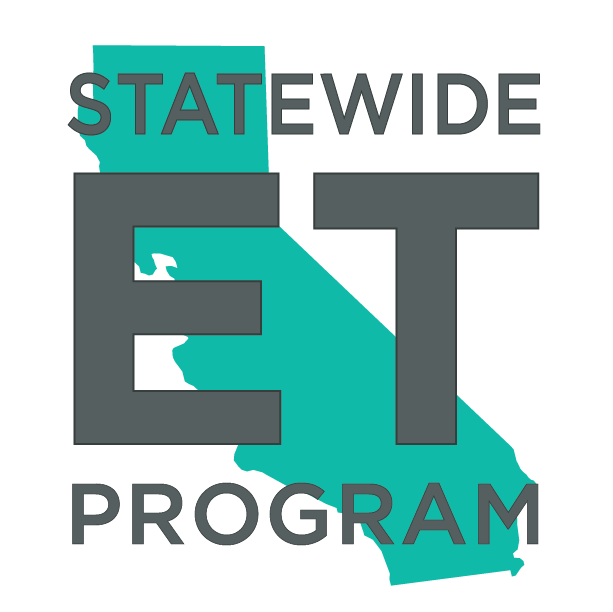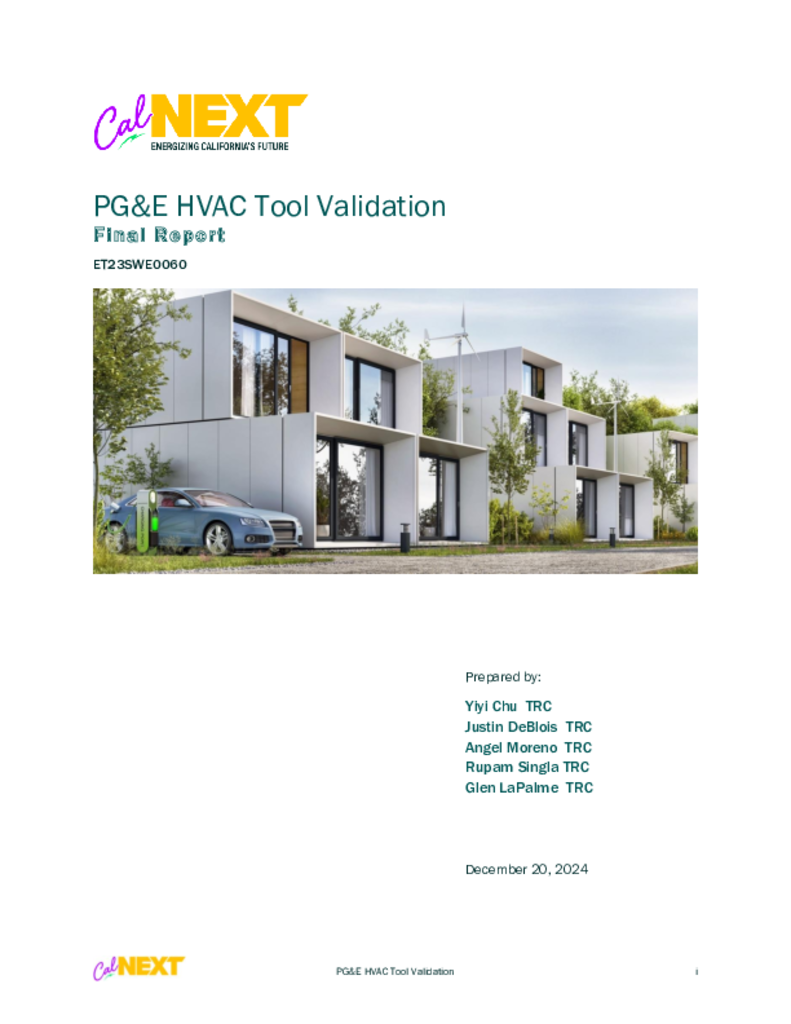ET23SWE0060 - PG&E HVAC Tool Validation
The proposed idea is to conduct a validation of parts of the “PG&E HVAC Tool” (Tool). The Tool is currently available to energy efficiency developers and implementors to estimate savings for RCx measures pursuing IOU energy incentives. However, there has been a reluctance by stakeholders regarding if, when, and how to use the Tool without additional validation and CPUC approval.
To date, the Tool has been managed and developed by PG&E. Cal TF is drafting an RCx Custom Measure Characterization Report and this tool is the proposed tool for producing the output for the report. The request for this validation work comes directly from CalTF with the goal of accelerating the acceptance of the Tool as a statewide standard tool by the three IOUs, Cal TF and the CPUC.
The Project Team proposes to validate the airside and hot water measures in the Tool using simulation output generated by Energy+. These two groups of measures (airside and hot water) are chosen because the models for these functions already exist in Energy+ allowing completion of significant progress within calendar year 2023 and at the expected budget.
The results of this work will help users, developers, program administrators and evaluators understand and minimize uncertainty when using the tool to forecast and verify CPUC/IOU energy savings claims and incentives.
The project team evaluated the alignment between energy savings estimates derived from a modeling tool (Tool) and those generated by whole building energy modeling, focusing on both air side and hot water system measures. Overall, hot water system measures exhibited better alignment, with simpler base case energy consumption and savings relationships compared to the more complex air side systems. Air side measures such as equipment replacement, scheduling optimization, economizer optimization, static pressure reset, and fan setback demonstrated good agreement between the Tool and modeling estimates, with average errors under 5% for both electricity and heating. However, discrepancies arose for supply air temperature (SAT) reset and space temperature setback, with the Tool either overestimating or underestimating savings due to limitations in how it handles detailed control strategies and fan savings.
For hot water system measures, the Tool generally aligned well with modeling for boiler and pump specifications, HW plant lockout control, and pump VFD control. However, for hot water temperature reset, the Tool overestimated savings due to its handling of jacket loss reduction, which differs from the modeling approach.
The project team provided recommendations to improve the Tool’s accuracy, particularly for measures where significant misalignment was observed. While it is unclear whether these improvements will bring Tool estimates fully in line with modeling results, they are expected to enhance the validity of the Tool’s assumptions and calculations. Given that whole building modeling, while highly accurate, can be time-consuming and costly, the Tool serves as a viable alternative for estimating energy savings in less complex projects.

